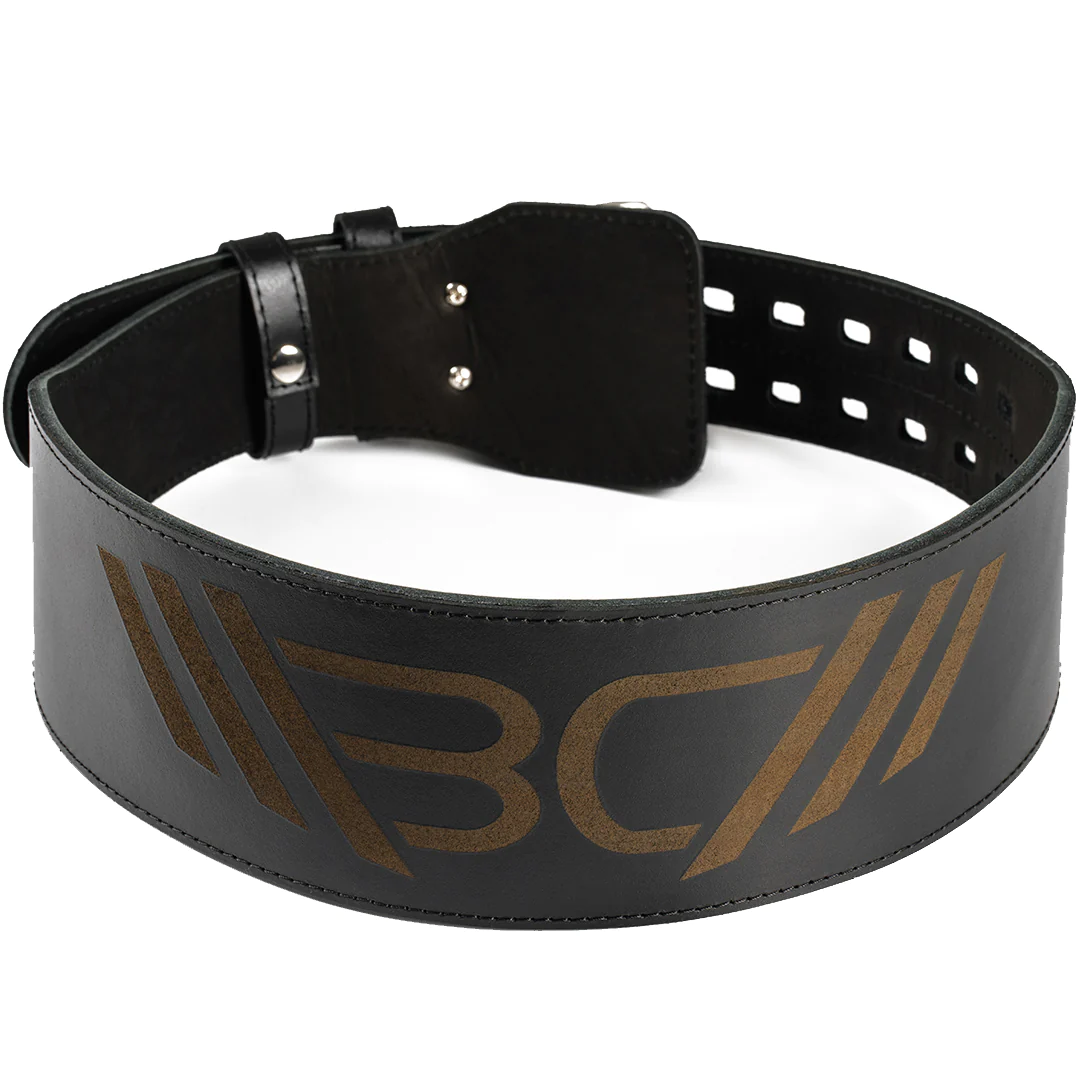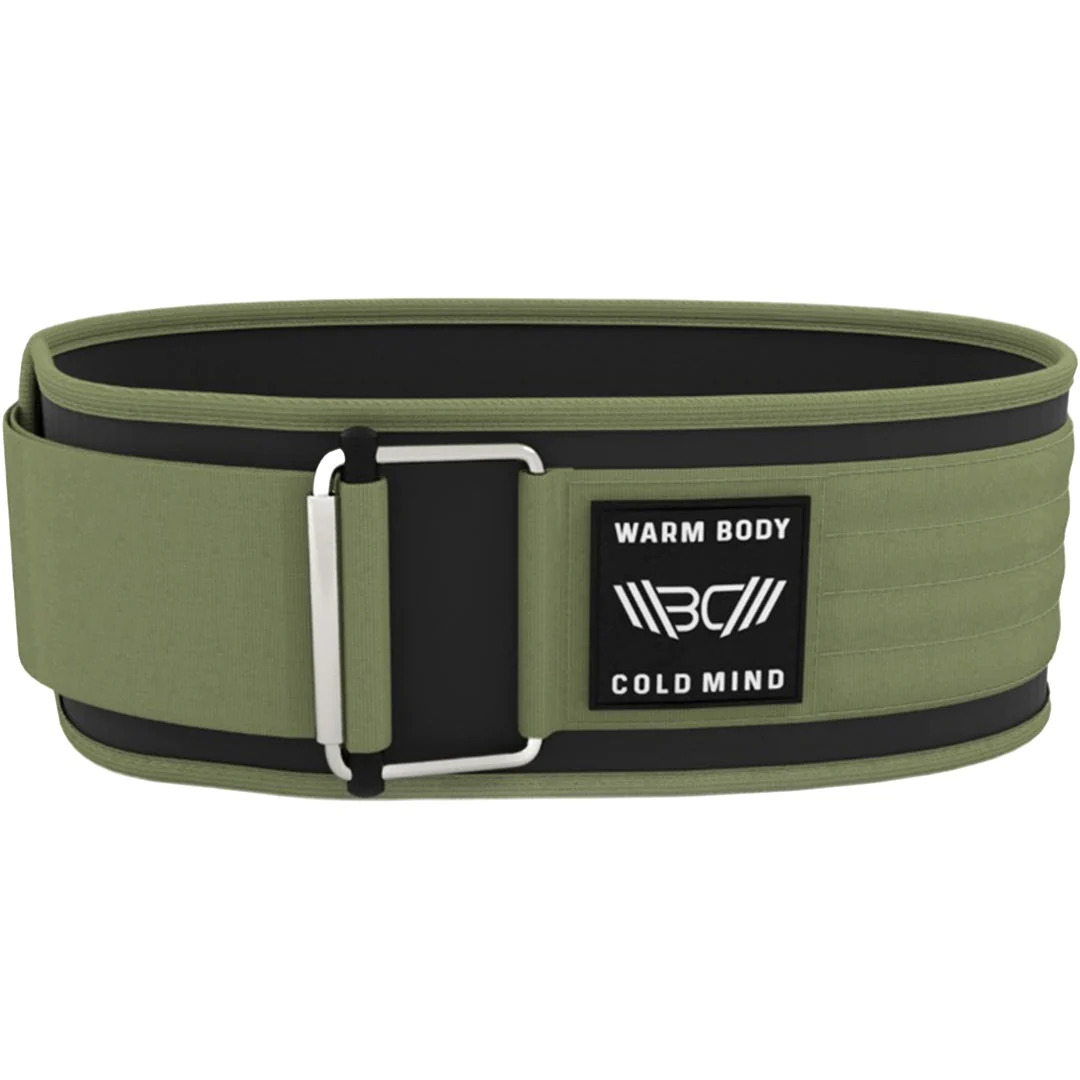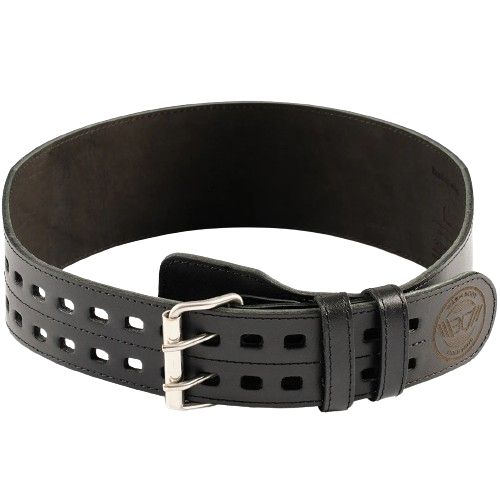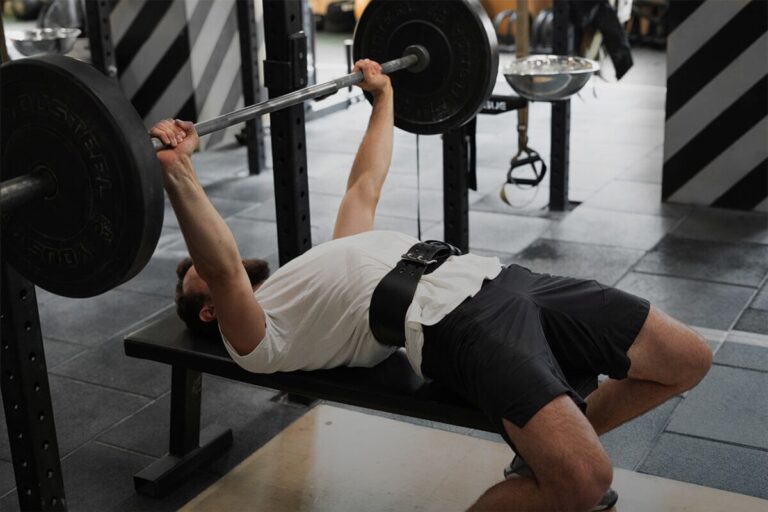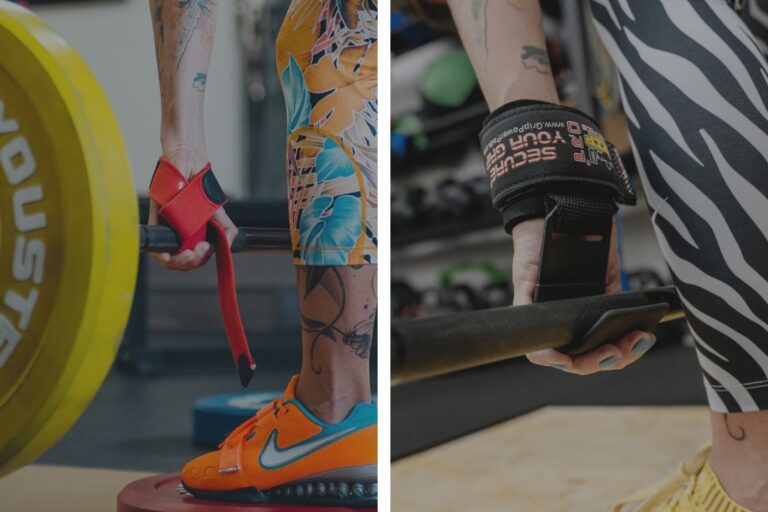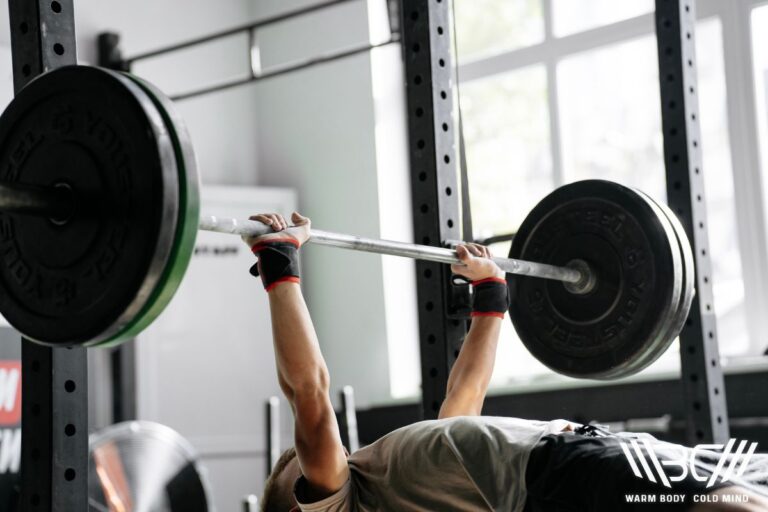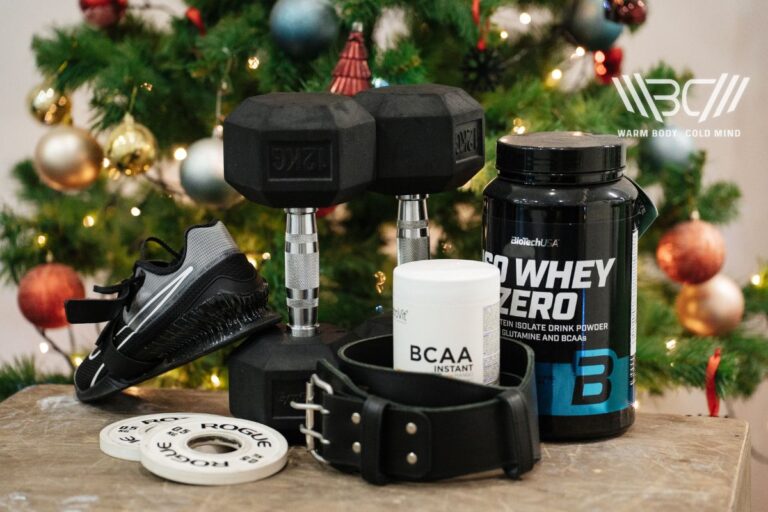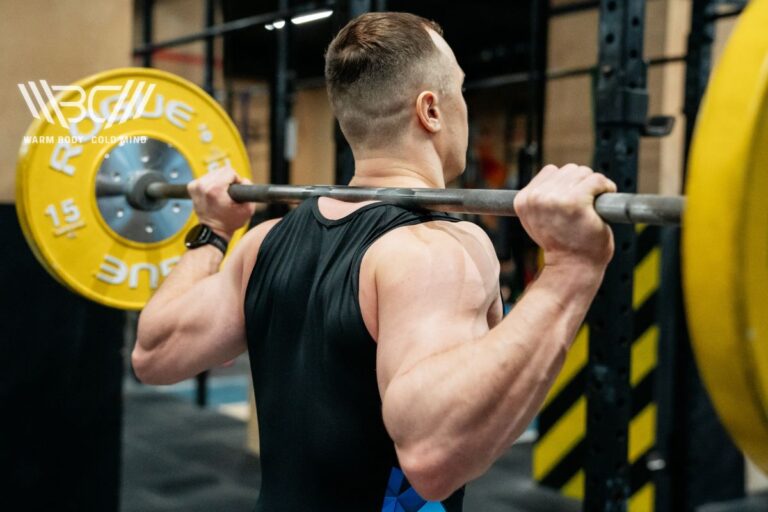What Is the Optimal Deadlift Belt Position?
If you’ve ever used a weightlifting belt for deadlifting, you’ve undoubtedly asked yourself if you’ve put the belt on correctly. What is the correct/best deadlift belt position? We’ll answer your question in detail throughout the article, but here we’ll keep it brief (in case you don’t have the time to read through it all).
The short answer is – unfortunately, there’s no magical one-size-fits-all solution. The ideal deadlift belt position varies slightly based on your body structure and your lifting style.
Luckily, there are some nifty pointers that might help you out. And we’re about to get into those below.
So strap yourself in, and let’s dive into deadlift belt positioning!
What is the best deadlift belt position? – There is no best deadlift belt position for everyone. If you have to choose one, then it would be around your mid-abdomen. Aim for a snug & comfy feel without any breathing impairments.
What Do Belts Do for Deadlifts?
In deadlifting, weightlifting belts serve a role in safety, injury prevention, and performance boosting.
So, what do belts do for deadlifts? Generally, the main idea of a deadlift belt (and its creation) was to stabilize your spine and to boost intra-abdominal pressure. By doing those two things the load on your spine (during lifting heavy) is minimized, and your now rigid core due to the abdomen pressure also helps with your spine (and spinal injury prevention), as well as potentially helping prevent hernias.
Lifting belts provide crucial lower back support as well as enhancing abdominal pressure. This extra support helps stabilize your spine which, in turn, helps lift heavier weights.

Enhance your strength training with Warm Body Cold Mind leather weightlifting belt providing exceptional support and durability.
The heavier lifted loads would increase abdominal pressure because of which there’s a risk of hernia (particularly inguinal hernias) due to the strain on areas prone to hernias (e.g., inguinal area, femoral area, hiatal area). And belts create intra-abdominal pressure which supports the abdomen, making it more rigid and less prone for your organs/fatty tissue to squeeze past the surrounding muscle, or connective tissue (fascia).
Lifting belts are assistive tools that help you maintain proper form in a more passive manner. Thanks to this, your injury reduction is increased. Keep in mind though, that this benefit is not a substitute for core strength. The lifting belt is there so that the lifter can take their mind from focusing on multiple things at once, and instead lets the lifter solely focus on the lifting technique.
And while some aspects of lifting belts might be more inclined toward beginners in deadlifts; belts are also very valuable for seasoned deadlifters since they help you maximize your deadlift potential (while increasing safety at the same time).

Can You Improve Your Deadlift Technique With a Belt?
In short – yes, using a weightlifting belt can noticeably enhance your deadlift technique.
Because of the fact that weightlifting belts increase intra-abdominal pressure (IAP) in your abdomen area and help stabilize your spine, the person doing deadlift can focus on their lifting technique.
When you’re focusing on one thing instead of multiple things at once, you’ll be able to make your performance leveling swifter and lessen the time that you’d otherwise need to improve.

Pro Tip:
It is always best to first develop a proper lifting technique using lower weights.
So, safety is the main thing that helps you indirectly improve your deadlift technique. However, there are more factors that can contribute to a better lifting technique during deadlift.
For example, there’s improved body biomechanics. Belts help you (or rather force you) to have a better posture/form during lifts. This helps with force transfer from your legs and hips to the barbell.
Another thing is lifting confidence. Simply by knowing that you’re being supported by a lifting belt is like having a good pal standing next to you and backing you up. You feeling safer will naturally provide you with a psychological boost which can, in turn, potentially heighten your physical performance.
The reduced risk of injury inadvertently creates a cascade reaction of extra benefits which all have positive outcomes towards your lifting technique during deadlift.
How to Wear a Belt for Deadlift?
So, here we are, with all the introductions and prelude questions out of the way – let us address the elephant in the room. How to use a lifting belt for deadlifts? How to position it correctly?
As we’ve noted earlier, the position of the belt can vary based on individual criteria (e.g., body type, lifting style, personal preference). Understanding this, you can more easily determine which the best deadlift belt position is for you personally.

Discover the strength of the Warm Body Cold Mind nylon lifting belt. Lightweight and durable, it provides optimal support for your workouts.
Belt Positions
When talking about deadlift belt placement, three will commonly be mentioned: low, mid, and high. And since each of the three offers their own unique benefits, we’ll go into more detail for each one.
1. Low Belt Position
A low belt position would be when you wrap the belt around the hips. If the lifter is very tall, this might be the preferred belt position for them. This is because this belt placement allows for better leverage and increased stability. This is especially true when lifting heavier weights.
The lower belt position is also convenient as it supports the lower back while still allowing for adequate hip/torso movement.
If you’re looking for a firm base of support closer to your center of gravity during the deadlift, then the lower deadlift belt position might be for you.
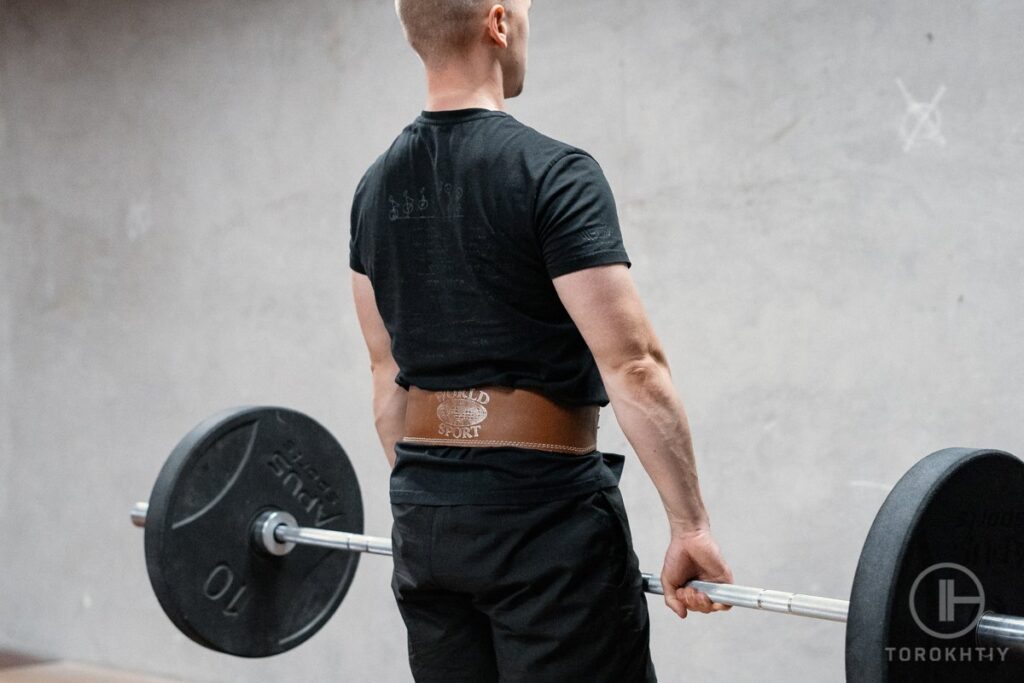
2. Middle Belt Position
The middle belt position is where you place the weightlifting belt around your mid-abdomen. This is the most common way to use a belt. Also, if you’re inexperienced, then this is most likely the belt position that you’ve been using so far.
This lifting belt position is the most balanced of the three when it comes to deadlift, since it provides the lifter with solid spinal support, while still allowing for full/deep breaths.
If you aren’t sure about belt position, or just want to play it safe, then the middle belt position is likely the best choice out of the three.
3. High Belt Position
The high belt position is where you position the lifting belt close to the rib cage. This lifting belt placement can be attractive for lifters with shorter torsos or if your lifting style is very specific and would benefit from the high position the most (from the three). The high belt placement reduces the pressure on hips/lower abdomen (low/mid belt placement) and enables a larger range of motion.
With this in mind, it also offers the least amount of lower back support compared to the other two. Athletes that opt for the higher belt position will usually focus on engaging their core muscles more actively to create the added intra-abdominal pressure (instead of passively relying on the belt to do so) in order to compensate for the higher belt placement.
| BELT PLACEMENT | DESCRIPTION | IDEAL FOR | BENEFITS | DRAWBACKS |
| Low | Hip-level | Long torso lifters | Stability | Restrictive Feel |
| Middle | Middle-abdomen | Most lifters | Balance | Fir Adjustment |
| High | Near ribs | Short torso lifters | Mobility | Less lower back support |
Long story short – How to wear a deadlift belt? While all three belt placements have their own ups and downs, it is good to know that you can’t really go wrong by simply going for the most common and most usual route – the ‘middle belt position’. It‘s the safest, and probably the most effective out of the three (unless the lifter specifically feels more comfortable using one of the other two).
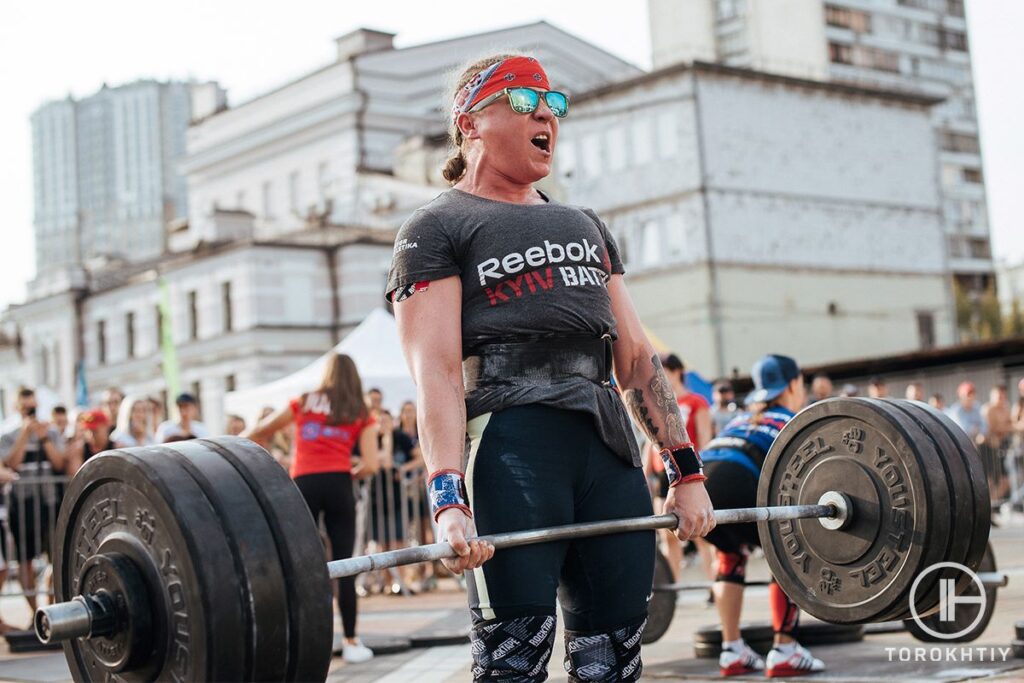
How Tight Should Your Belt Be For Deadlifting?
The tightness of your weightlifting belt is paramount when it comes to using one. The same is also true when it comes to deadlifting. And while that sounds great, it doesn’t help with telling you, the reader, how much you should tighten/loosen your belt when doing the deadlift. So, let’s address that.
The weightlifting belt should be tight enough to provide enough support while providing a sturdy wall for your abs to push against. If you have that sturdy wall, that means that you’ll also have proper spine alignment and stability, which is what you’re aiming for.
On the other hand, if you have trouble breathing, have limited range of motion, or if the belt is simply cutting into your skin, then you’ve gone too far with tightening and should loosen the lifting belt a tad bit.

Pro Tip:
A good rule of thumb when it comes to weightlifting belt tightness when doing a deadlift is this:
The belt’s functionality is to boost your existing lifting technique, not to compensate for your lack of it. And while this sentence might sound a bit harsh, it is best said as it is. Lifting heavy can be dangerous if your technique is lacking. So if that is the case, work on your technique and improve it. Once the technique is good, you can utilize a lifting belt to bring your deadlift game to the next level (not before).
Subscribe!
The latest reviews of must-have home gym training equipment, apparel, and supplements that will enhance your performance and bring you new results.
6 Common Mistakes When Wearing a Deadlift Belt
We’ve covered the purpose of a lifting belt when doing deadlift. We’ve covered the benefits, and how to use the lifting belt correctly. And all of that holds its ground, that is true. And it is true only if the belt is used correctly.
So the best thing to do next is make you aware of the most common mistakes athletes make when using a lifting belt for deadlifting, just so that you can avoid them and prevent any possible injury that might’ve occurred otherwise.
1. Incorrect Adjustment
As we’ve said in the previous section, tightening the belt too much, as well as having it too loose is a very common mistake. The fit should be snug, but if your breathing is restricted (you can’t take a full breath), if your movement is hindered, if it feels uncomfortable, then the belt is too tight.
2. Belt Positioning
We’ve covered the three belt positions (low, mid, high) earlier and have said what each’s purpose is. But if you’re asking yourself ‘Where should a lifting belt be worn?’, or are unsure about which belt position is best for you; then simply go with the mid-abdomen belt position where you’ll get the best spinal support as well as having proper breathing/bracing.
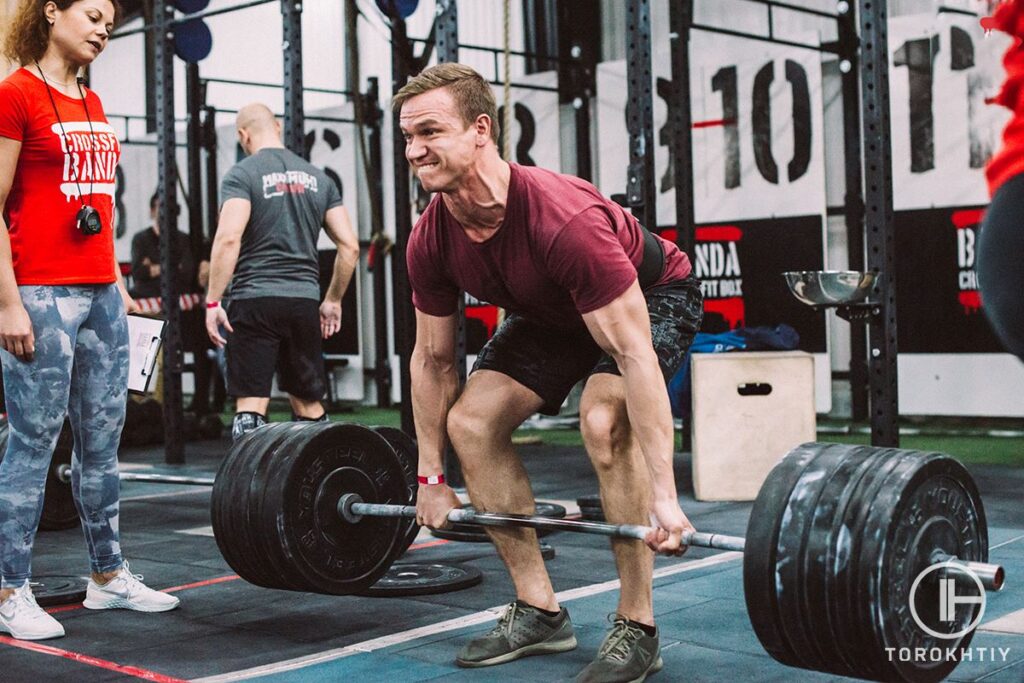
3. Using the Belt Always
Using the weightlifting belt for each and every lift is a bad idea. While a lifting belt can help you improve your posture and lifting form, if you over-rely on it and get too accommodated in using one, your technique will ultimately suffer.
Use a weightlifting belt (ideally) only when lifting heavy, attempting to lift weights that are currently outside your lifting range (or in the upper echelon of what you can currently lift), or you’re simply trying to break some records.
4. Not Readjusting the Belt Between Exercises
In this article we are addressing using weightlifting belts while doing deadlifts. That is correct. However, if you’re planning on doing, for example, squats as well, you should definitely adjust the belt when moving from one exercise to the other. Every specific lift should have the tightness of the belt checked and adjusted as the movement is different and the current tightness/looseness might be incorrect.
5. Ignoring Core Training
While we’ve already mentioned that over-reliance on a weightlifting belt can be detrimental for you in the long run, ignoring core training is also bad. Use a weightlifting belt to boost your already strong core (as a complement). Don’t use the belt to replace your core training or to compensate for the lack of it.
6. Eating Just Prior to Using a Belt
Having a satiated belly is important; especially if you want to use those calories to lift those weights. However, eating just before the actual exercise can be harmful to your overall health.
Having a tightened weightlifting belt following a meal can cause acid reflux due to the extra compression created by the belt. This might not always be the case, but just to be sure, give your body a bit of time to digest the food before using the lifting belt.
Lifting Belt for Deadlift We Recommend – WBCM Leather Weightlifting Belt
The Warm Body Cold Mind 6mm Leather Belt is 4’’ wide and offers sizes from S, all the way to XXXL.

And while the measurement chart might confuse you with the lower belt position being highlighted in red as ‘wrong’, it is important to clarify that this chart refers to ‘belt measurements’.
The WBCM belt is made out of genuine grade-A leather. It looks premium, it feels premium. It has extra stitching to help with product life (it is not simply created by gluing stacked layers), and it boasts a fortified stainless steel double-roller buckle. The belt is, after all, created by lifters for lifters, and it’ll serve you very well during your deadlifting sessions.
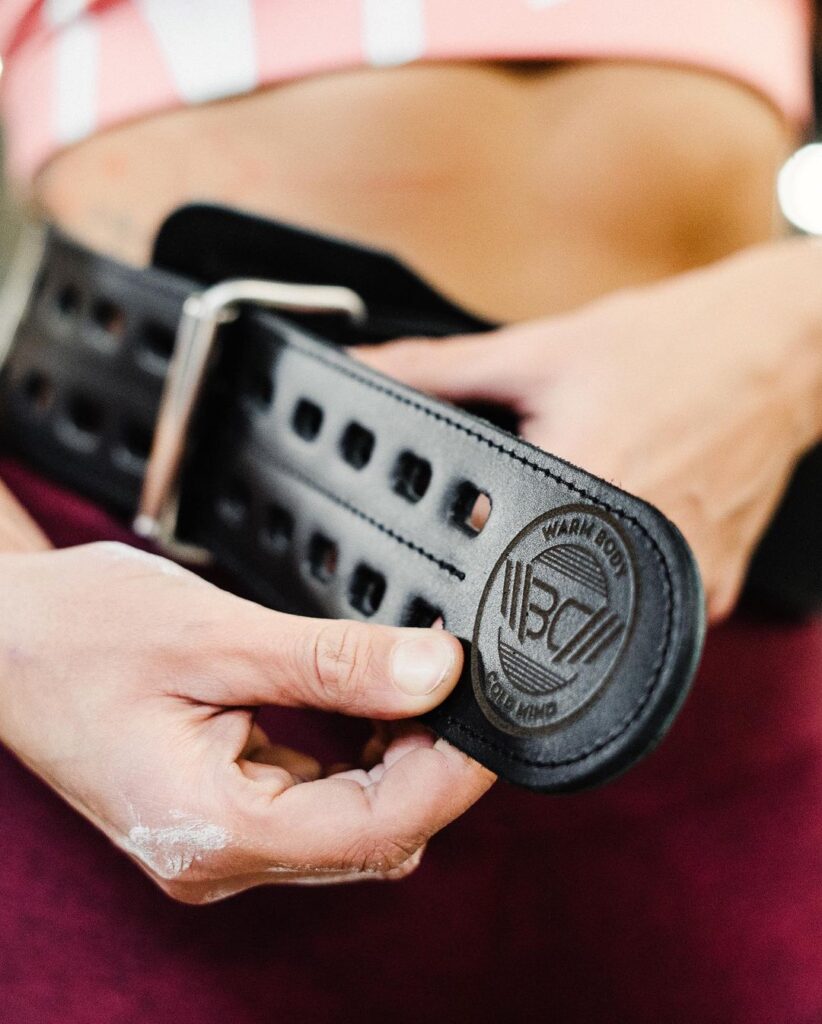
The 6 mm width of the belt also allows for max flexibility, while still offering ample support & stability. A really great choice in terms of lifting belts. And if you still have any doubts, WBCM is confident enough to provide you with a 14-day return policy, which is great!
Pros
- Short break-in period
- Strong fortified buckle is sturdy with no wobble issues
- Grade-A premium leather
- Multiple sizing options to accommodate most lifters
Cons
- A bit more pricey than similar belts on the market (premium)
- Only one color choice (black)
Nylon Lifting Belt for Deadlift We Recommend – WBCM Nylon Weightlifting Belt
If leather isn’t your jam, here’s another amazing belt that you can utilize for deadlift, and it won’t disappoint.
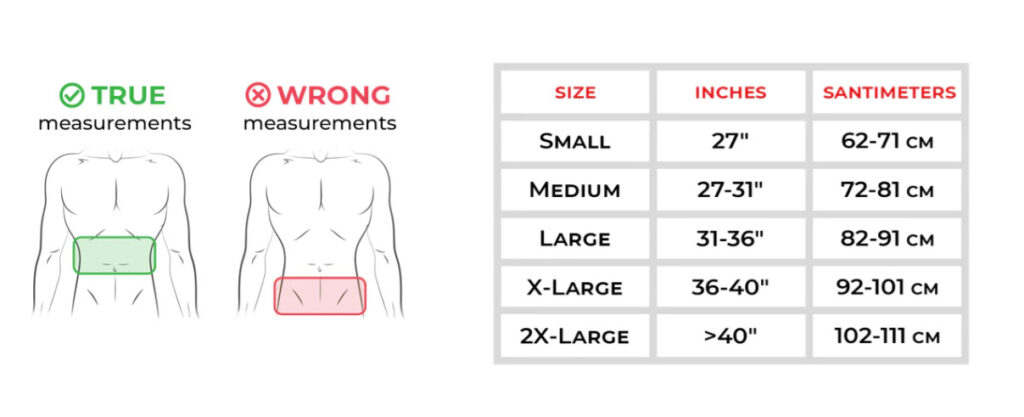
The Warm Body Cold Mind Nylon Weightlifting Belt is instead of being leather-made, completely synthetic. And while that might sound like the ‘knock-off’ version, the truth is far from that. Only the highest quality materials were used to create this belt. And to prove it, WBCM stakes its reputation on the belt.
The WBCM Nylon Belt comes available in four colors, as well as sizes from S up to XXL (this should cover most athletes). The belt is very flexible while still providing a substantial amount of mid-abdominal pressure. Adjusting is also very quick & easy due to the Velcro system guided and tightened by a metal clasp. There is no expansion or slippage; once the tightness has been set, it’ll stay there!
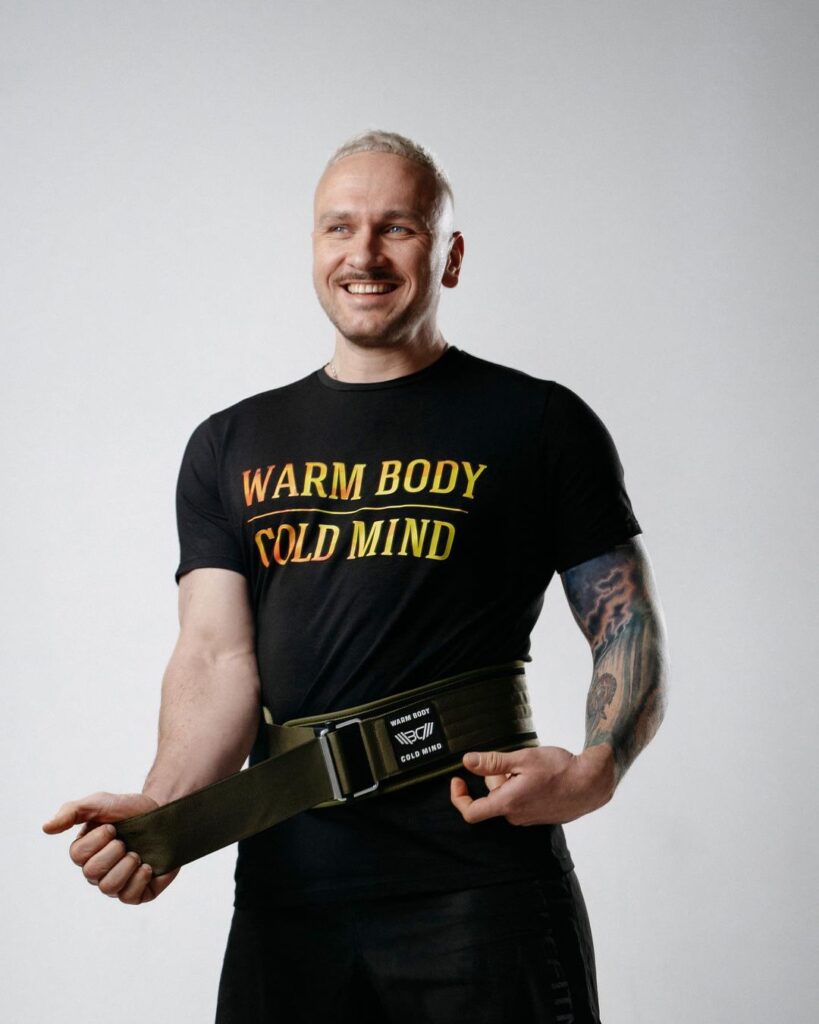
The belt also has a huge advantage over the standard leather belt – it’s breathable! And for those who know, you know how impactful that can be (especially after a lengthy session). Another huge plus is the weight of the product, which is much lighter compared to leather belts. The belts look fashionable, and the quality durable nylon and double stitching will ensure the product stays fashionable for a long time.
A great buy!
FAQ
Where Should a Deadlift Belt Be Placed?
For a weightlifting belt, when doing a deadlift, the most optimal is the middle-abdomen position (above the hips and below the ribcage). This is the most commonly used belt position by most lifters.
Does a Deadlift Belt Keep Your Back Straight?
Not automatically. The deadlift belt provides external pressure, thus motivating you to brace your core and engage (keep tight) muscles that support your spine. So, in a way, a deadlift belt helps the lifter keep their back straight. Just not the belt directly.
How Tight Should a Belt Be When Deadlifting?
When deadlifting with a belt, the belt should ideally be snug against your body while still allowing you to take a full breath. If you can fit one or two fingers between the belt and your body you’re likely on the right track. This should be the perfect tightness to allow you to brace and have proper spinal support.
Conclusion
There we go! Hopefully, you’re leaving this article knowledgeable on belt-positioning during deadlifts. But just to summarize, there are generally three belt positions used in deadlifting (low, mid, and high), and each has its advantages and considerations.
If in any doubt or are uncertain about which one you should use, then simply opt for the middle-abdomen position. It is the most used among deadlifters, and it is the most balanced one offering strong offense and defense.
What are your thoughts on belt-positioning in the mighty deadlift? Do you have any questions that remain unanswered? Great! Write them up in the comments section below and let’s improve this article even further! We’d love to hear your questions, your thoughts, and your experiences on the matter. 🙂
Happy belt positioning!
References:
- E A Harman, R M Rosenstein, P N Frykman, G A Nigro, “Effects of a belt on intra-abdominal pressure during weight lifting”, Med Sci Sports Exerc. 1989 Apr;21(2):186-90., PubMed, https://pubmed.ncbi.nlm.nih.gov/2709981/ (accessed December 4, 2023).
- N D Bourne, T Reilly, “Effect of a weightlifting belt on spinal shrinkage”, Br J Sports Med. 1991 Dec; 25(4): 209–212., PubMed, https://www.ncbi.nlm.nih.gov/pmc/articles/PMC1479027/ (accessed December 4, 2023).
- Gregory J. Renfro, William P Ebben, “A Review of the Use of Lifting Belts”, February 2006Strength & Conditioning Journal 28(1), Research Gate, https://www.researchgate.net/publication/232184433_A_Review_of_the_Use_of_Lifting_Belts (accessed December 4, 2023).
- A J Zink, W C Whiting, W J Vincent, A J McLaine, “The effects of a weight belt on trunk and leg muscle activity and joint kinematics during the squat exercise”, J Strength Cond Res. 2001 May;15(2):235-40., PubMed, https://pubmed.ncbi.nlm.nih.gov/11710410/ (accessed December 4, 2023).
- Shirley S.M. Fong PT PhD, Louisa M.Y. Chung RNutr DHSc, Yang Gao MD PhD, Jeff Chak Wai Lee BHE, Tak Ching Chang BHE, Ada W.W. Ma PhD, “The influence of weightlifting belts and wrist straps on deadlift kinematics, time to complete a deadlift and rating of perceived exertion in male recreational weightlifters”, Medicine (Baltimore). 2022 Feb 18; 101(7): e28918., PubMed, https://www.ncbi.nlm.nih.gov/pmc/articles/PMC9282110/ (accessed December 4, 2023).
- David R. Mitchell, Mohammad H. Derakhshan, Angela A. Wirz, Stuart A. Ballantyne, Kenneth E.L. McColl, “Abdominal Compression by Waist Belt Aggravates Gastroesophageal Reflux, Primarily by Impairing Esophageal Clearance”, Gastroenterology Volume 152, Issue 8, June 2017, Pages 1881-1888, ScienceDirect, https://www.sciencedirect.com/science/article/abs/pii/S0016508517302317 (accessed December 4, 2023).
- William A. SodemanJr. M.D. J.D. F.A.C.P. F.A.C.G. F.A.C.L.M. Thomas C. Sodeman M.D., “Inguinal Hernia”, Instructions for Geriatric Patients (Third Edition), 2005, ScienceDirect, https://www.sciencedirect.com/topics/medicine-and-dentistry/inguinal-hernia#:~:text=An%20inguinal%20hernia%20is%20the,of%20straining%2C%20causes%20this%20protrusion (accessed December 4, 2023).
- M. Magnusson, M.H. Pope, T. Hansson, “Does a back support have a positive biomechanical effect?”, Corrigendum Applied Ergonomics, Volume 27, Issue 5, October 1996, Pages 345, ScienceDirect, https://www.sciencedirect.com/science/article/abs/pii/0003687095000070 (accessed December 4, 2023).
Author: Sergii Putsov
PhD in Sport Science, Olympic weightlifting, Strength & Conditioning coach and fitness expert
Sergii Putsov is a professional weightlifter with over 20 years of experience and multiple national medals. He was a member of the National weightlifting team, competing in the 94 kg weight class. Sergii holds a master’s degree in Olympic & Professional Sport Training and a Ph.D. in Sport Science. After his athletic career, Sergii transitioned into coaching and is now responsible for designing training programs, writing blog articles, providing live commentary for international weightlifting competitions, and hosting sport and fitness seminars worldwide.


